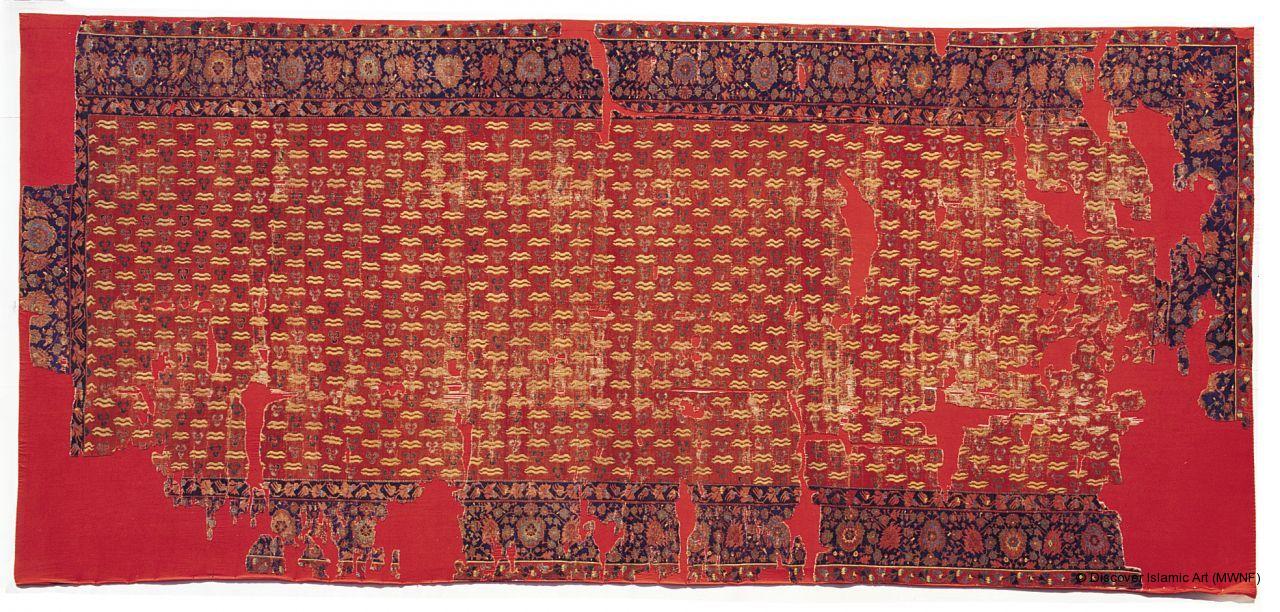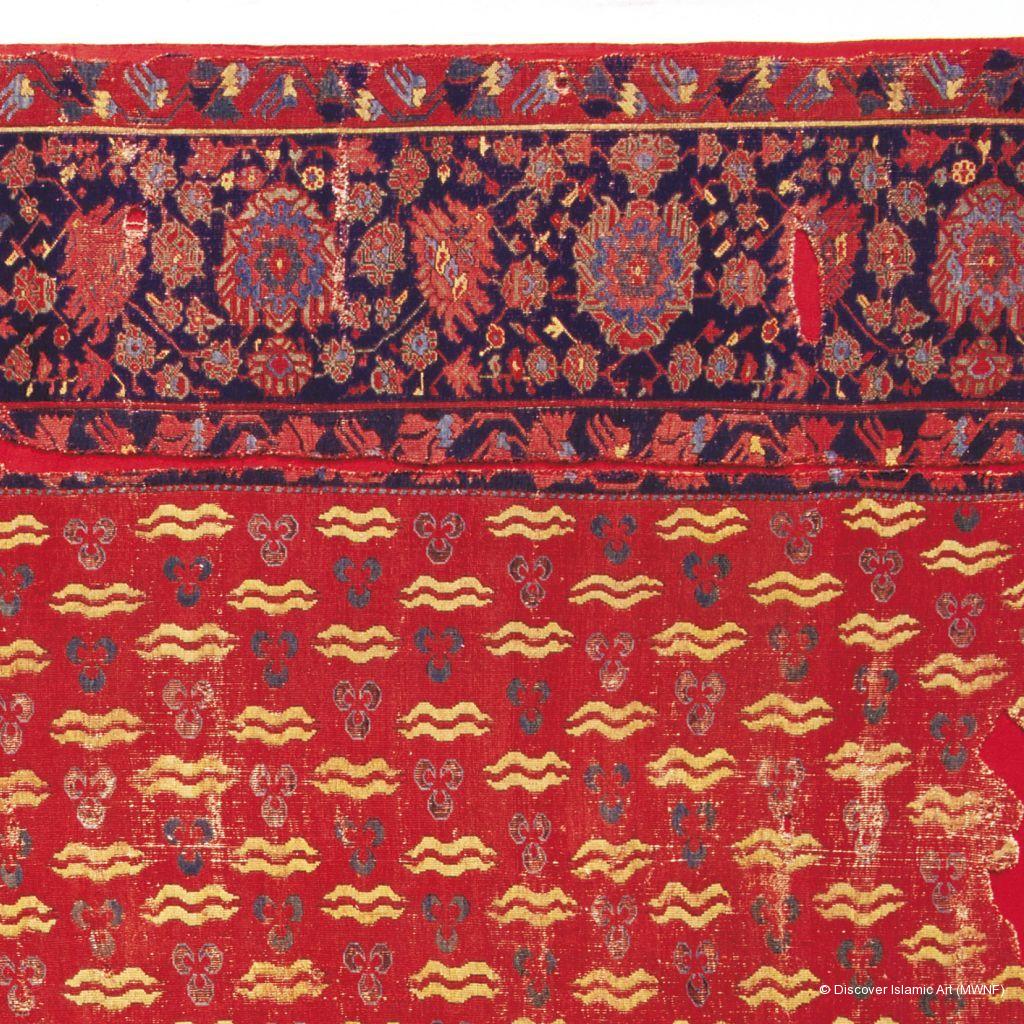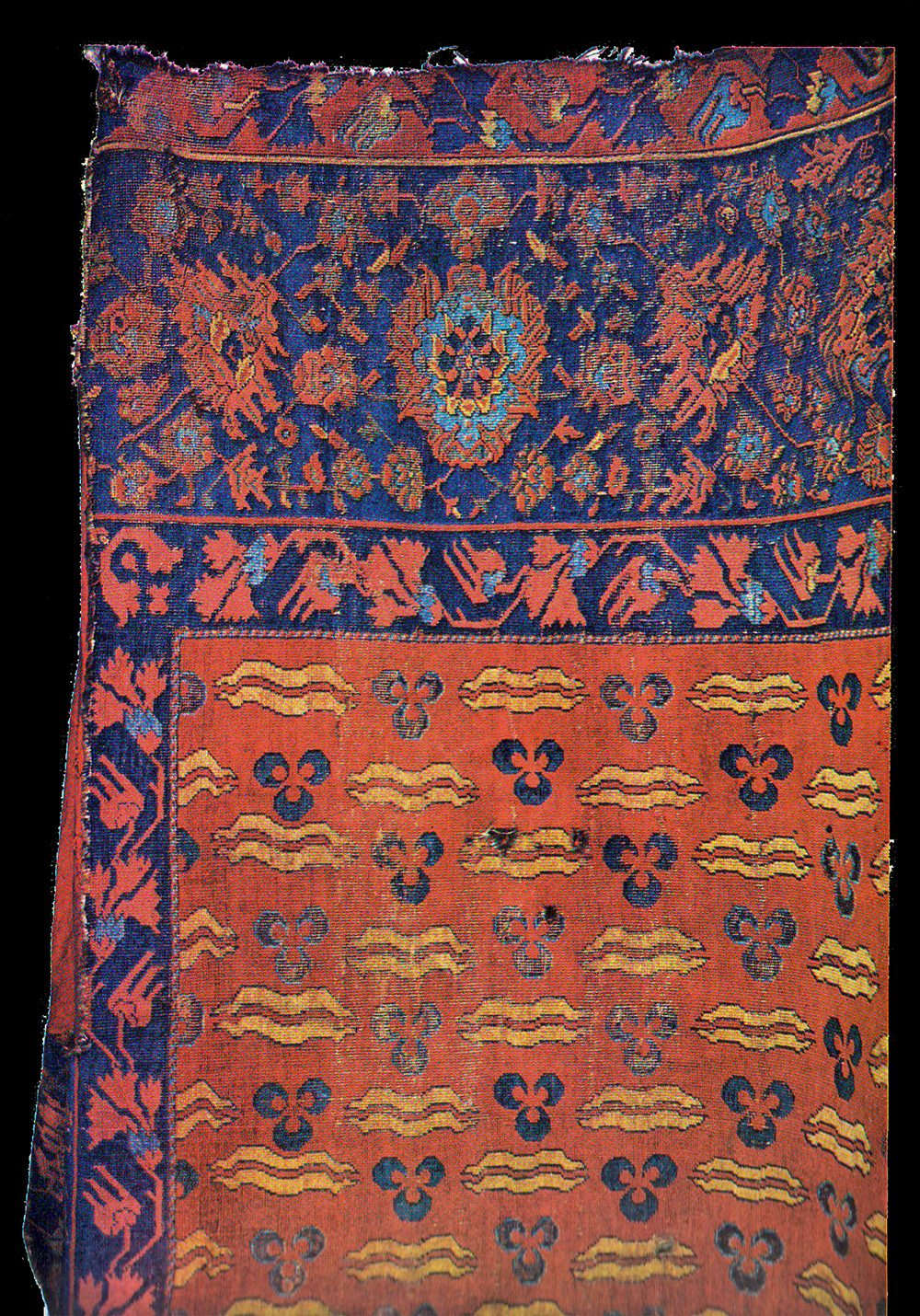|
Holding Museum:
Museum of Turkish and Islamic Arts, Sultanahmet, Istanbul, Turkey
Museum Inventory Number: 696–697
Dimensions: Length 789 cm, width 360 cm
Material(s) / Technique(s): Wool on wool, woven with the Turkish double knot
also known as the Gördes knot.
Date of the object: Hegira 10th century / AD 16th century
Period / Dynasty: Ottoman
Provenance: Uşak, Turkey.
Description: An Ushak carpet of the AH
10th / AD 16th century; the warp and the weft of which are of wool. The
weaving technique used is the 'Turkish double knot', known as the Gördes
knot. The rug is in two pieces.
On a red ground, arranged on a zigzag axes, are motifs known as chintamani
or pelenk (leopard-spots or tiger-stripes motif). Black and dark-blue
chintamani motifs with blue contours are arranged together with yellow tiger
stripes with black contours, according to the principle of infinity. These
motifs have Buddhist roots and show Far Eastern influence; they appear on
the clothing of figures in the caves at Turfan in the Xinjiang province of
China, probably painted in the AH 1st–3rd- / AD 7th–9th -century.
The chintamani or pelenk motifs were used as symbols of power and authority,
entering Ottoman palace art with the capture of Tabriz, following the
victory won at Chaldiran in AH 920 / AD 1514 by Sultan Selim I (r. AH 918–27
/ AD 1512–20). From the AH 10th–12th / AD 16th–18th century the motifs are
seen in all the decorative arts made by artists directed by the Ottoman
court, seen especially in textiles, ceramics, book-bindings and woodwork;
they were most popular under Sultan Selim II (r. AH 974–82 / AD 1566–74).
The perimeter of this carpet has two narrow borders and one broad border.
The first narrow border consists of a dark-blue ground between an orange-red
strip, with blue and red dots and a red line. It is filled with tulip and
carnation motifs between interweaving red stems. The main border is
decorated with enormous lotuses, rose-petals, and stylised flower and leaf
motifs in light- and dark-red with brown contours. The outermost border is
filled with dark-blue, blue, and cream-coloured tulip and carnation motifs
amid interweaving stems on a red background.
How object was obtained:
The rug was transferred from the Sultan Selim Mosque in Konya to the Museum
in 1911 as a result of the countrywide initiative to collect together
artworks in order to prevent theft and plunder.
How date and origin were established:
It is thought to have been either ordered, made specially, or donated as a
pious gift to the Sultan Selim Mosque in Konya, which was begun when Sultan
Selim II was governor of Konya (i.e. before he had ascended the throne) but
completed in the same year he became sultan, AH 973 / AD 1566. During the
Ottoman period it was traditional for the sultan to have made as furniture
for the mosques he was commissioning carpets, Qur'an stands and other fine
artefacts, The carpet's decorative motifs, together with the date of
construction of the mosque it came from, lead us to date it in the 10th /
16th century.
How provenance was established:
In the 10th / 16th century the most important centre for carpet production
was Uşak and its vicinity. The composition and motifs on this carpet's main
border, in particular, pertain to the region of Uşak and suggest that the
carpet was woven there.
Selected bibliography:
ölçer, N., et al, Turkish Carpets from the 13th–18th Centuries, Istanbul
1996, Pl. 81.
Roxburgh, D. J. (ed), Turks: A Journey of a Thousand Years, 600–1600,
London, 2005, p.463.
Prepared by: Gönül Tekeli
Translation by: Barry Wood, İnci Türkoğlu
Translation copy edited by: Mandi Gomez
|



